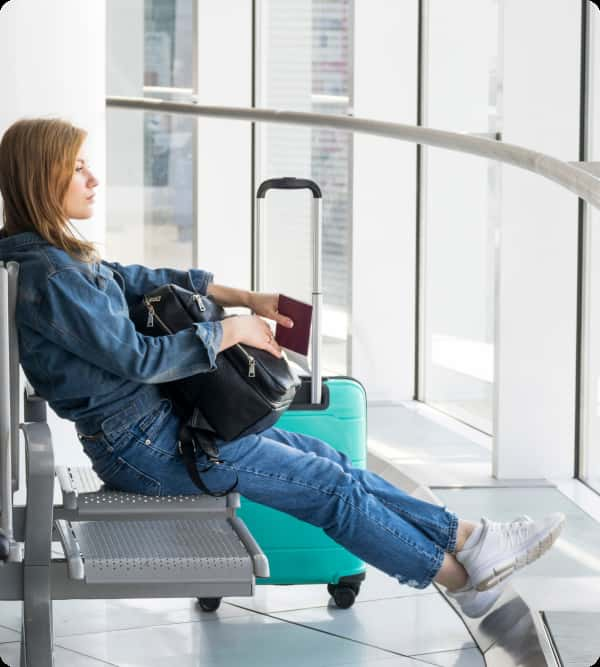Due to the complexity and size of airline operations, and the unexpected nature of disruptions, it can be difficult to know how to prioritise solutions – especially at a passenger level.
There are a number of aviation reports that analyse irregular operations (IROPS), including their effect on airline scheduling, crew, on-time-performance and more.
However, the Airline ImPax Report analyses airline disruptions from the perspective of their impact on the passenger experience.
The aim of this report is to help airlines identify which disruptions impact the passenger experience most, and what is considered an industry benchmark. This will enable airlines to be proactive in prioritising solutions to mitigate the negative effect of the disruption on the passenger experience.
All of this is in the context of increased passenger expectations largely revealed in the post-pandemic restart, where the number one reason passengers choose to never fly an airline again is because of a badly managed disruption experience.

Disruption = Loss of Passenger Time
Most airline disruptions can be measured in loss of time for the passenger. Two hour delay at origin usually equals a two hour loss in-destination.
It is not a perfect deduction. There are instances when a relatively short disruption period can have a large impact on the trip for the passenger.
Without knowing the value of the trip – why the customer is travelling – it is impossible to fully measure the impact of any disruption on the passenger experience. So, we cannot fully assume a cancelled flight is worse than a 45 minute delay.
That said, for an airline operating at scale, a benchmark can be helpful to prioritise passenger solutions and measure performance against the industry.
We call this benchmark the ImPax Percentage.
The ImPax Percentage
The ImPax Percentage identifies the segment of an airline’s disrupted flights that results in the greatest loss of time for the passenger.
It is the percentage of an airline’s disrupted flights where the nature of the disruption begins to negatively impact the passenger experience, and worsens as time increases. This helps airlines identify where active measures can be employed to mitigate the negative effect on the passenger experience.
Active measures can range from real-time updates, lounge access, and refunds to overnight accommodation, rebooking on other carriers, compensation, voucher and more.
Minor delays (less than 1 hour) can be very disruptive – especially in the event of a tight connection, and should not be underestimated in the passenger journey.
However, regarding the passenger experience and prioritising solutions, the ImPax Percentage does not factor in minor delays, as they are negligible (for the most part) in their impact on NPS metrics.
Furthermore, minor delays (>15 minutes) can be skewed toward larger airlines with massive logistical infrastructures and the potential for greater collateral. And, the benefit of this report is to provide some sense of standing for each airline regardless of tier or region - a benchmark by which to measure performance but also to clarify the problem.
Sentiment Analysis
For sentiment analysis, TripAdvisor, TrustPilot, Social, and Skytrax are used for airline source reviews. Each month, the report focuses on a selection of airlines (8–10) across each tier and region, using a sample size of more than 200 reviews.
The idea is simply to close-the-feedback-loop for airlines, and get a sense on any given month what are the dominant classifiers used in passenger reviews.
The impetus to write a review is often driven by memorability or exceptionality of customer experience – when the experience is above or below customer expectations. For this reason, in travel they tend toward the negative. When travel operates smoothly, it is unexceptionable because that is what the customer has paid for: on-time flight, baggage arriving on time, in-flight entertainment to be working, etc.,. When it goes wrong - and as airlines are most sensitive to inclement weather, so it often can go wrong - it inspires an emotional spike which negatively imprints memories.
Interestingly, most reviews are from a travel experience one to two months past. This suggests a negotiation period where the airline might have an opportunity to engage the passenger, and provide compensation to make it right.
The most insightful reviews (and the ones we try to surface) are those that outline something negative but share how the airline responded and mitigated the negative impact.
“Flew roundtrip from DFW-BOS. No delay inbound to BOS; however the outbound flight to DFW was delayed by 2h 30m because of the winter storms. [Airline] through its mobile app and messaging kept us informed of each and every flight delay update. Although delayed we were glad to be home rather than being stranded in BOS. I would definitely fly [Airline] again.” [Tier 1, North America, FSC]
Disclaimer
We have spoken to >150 airlines in the last 24 months and all of them are pursuing new IROPS solutions to an industry-wide problem that is largely driven by factors – namely weather – out of their control. In no way does this report seek to negatively highlight an airline’s efforts, that is why the reviews are kept anonymous. Using sentiment analysis is simply another way to learn from the passenger experience.